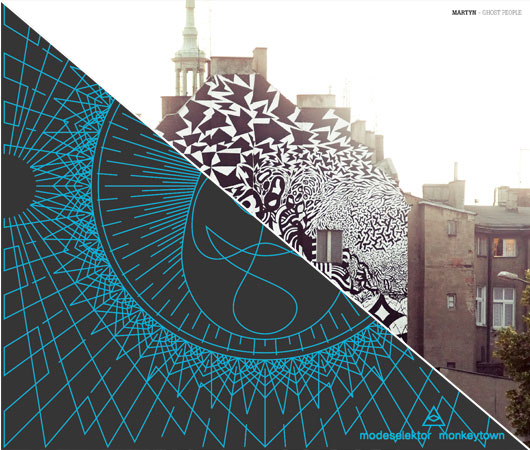B2B: Martyn and Modeselektor, Part 4
XLR8R recently set up an extended conversation between Martyn and Modeselektor, as both acts released […]

B2B: Martyn and Modeselektor, Part 4
XLR8R recently set up an extended conversation between Martyn and Modeselektor, as both acts released […]

XLR8R recently set up an extended conversation between Martyn and Modeselektor, as both acts released new full-length albums within the past few weeks. As it turned out, the boys had so much to say that it quickly seemed impossible to significantly cut down the transcript, so we elected to run the discussion more or less in full throughout the week. After catching up on the previous chapters (part one | part two | part three), delve into the fourth segment, which finds Martyn talking production methods with Modeselektor’s Gernot Bronsert and Sebastian “Charlie” Szary.
XLR8R: How have your production processes changed over the years? What’s new about these latest albums as opposed to past ones?
Gernot Bronsert: Martyn, I think you finished two months before us. In spring, you told me that you were working on your album, and then just a few weeks later in the summer, you said, “Yeah, it’s done.” I started before you working on our album with Charlie. Actually, we started a year ago, but we couldn’t work. I had a creative block and I didn’t have fun and Charlie had a similar situation. But 10 weeks before the deadline, the music came, and we started working on the music. But we used the time where we were not making music. Over the last three or four years when we were on tour, we bought so much equipment. So, I bought a drum machine in San Francisco, or a synthesizer in England, and whatever, we had so much gear, like analog stuff, that we never used because we were always away. So, we took the time before we started working on the album to set up a studio, and we wired all these old machines. I think we have all the Roland drum machines.
Sebastian “Charlie” Szary: I think the 727 and the 525 are missing.
GB: We have two 808s. Addison Groove is jealous. We started using analog equipment for the new record. More than half of it, maybe 70 or 80 percent of all the sounds we used for the record, are analog recordings, and we never did that before. You need to change your whole mixing setup when you use outboard equipment and effects and instruments. That was our main difference. We recorded a lot of hooklines and melodies and drums in sessions. We just made sessions and recorded it. We didn’t spend too much time thinking about numbers, for example. When we did the records before, we spent so much time calculating and EQing. We did for this record too, but in a different way. We took half the music out of the computer and used a lot of analog equipment. That was a really nice experience. It kept us fresh, for some reason.
Martyn: My story is very simple. I moved from Holland to the US a few years ago, so I used to have quite a lot of analog equipment. It wasn’t very special, but it was a lot. It was all sort of cheap Roland synths and a big Mackie desk. I sold everything when I moved to America, because most of the stuff was more expensive to ship over than to sell. So when I came to the US, I only had a Mac, and that was it. So I started using software only, just Logic, to make my music. Now it’s three years in, and I guess I buy some stuff here and there, but it’s not a lot. It’s mostly just MIDI controllers and Monotrons. I have a few outboard things, like the Eventide and a reverb and a delay and that’s basically all I need. I’m very sample based. I use lots of samples from everywhere. All that Roland stuff that you have, I have all the samples. I just use the samples usually, so it’s all very simple. On the new album, I have used a lot more synths than on the old one. The old one was basically 100% samples and very, very few soft synths. The new one is sort of 50-50, because I used two microKorgs and some outboard effects and things like that. The Monotron is on every single song on my album.
GB: Really?
M: All the lazers, it’s all Monotron.
GB: I need to say, your record sounds very analog. I like the sound. It’s very edgy. When I was first listening to it, I thought it was too much on the edge, but I think that’s the mastering, right? But it’s really cool. The whole record has its own sound, and that’s what I really like and appreciate. It doesn’t matter what kind of music style you have on a record, but when it sounds like it was made by one guy, then it’s good. You have your own sound.
M: I think a very important thing was also that I do like distortions, so a lot of my music is kind of distorted anyways, or has some kind of fucked-up sound. I think the mastering, which was done by Daddy Kev, who does all the Brainfeeder stuff like Flying Lotus’ music, his style is hard.
GB: I think you changed your sound with this record, because the music you made before was sounding different. That’s my opinion. I mean frequency-wise, not style-wise. The aesthetic of the sound, it sounds more rough, in a good way.
M: I use a lot of overdrive and stuff like that on a lot of the elements of the music. I use drives and distortions and that sort of stuff. All that, it’s all software. It’s not hardware.
The final installment of B2B: Martyn and Modeselektor will be posted tomorrow morning.

